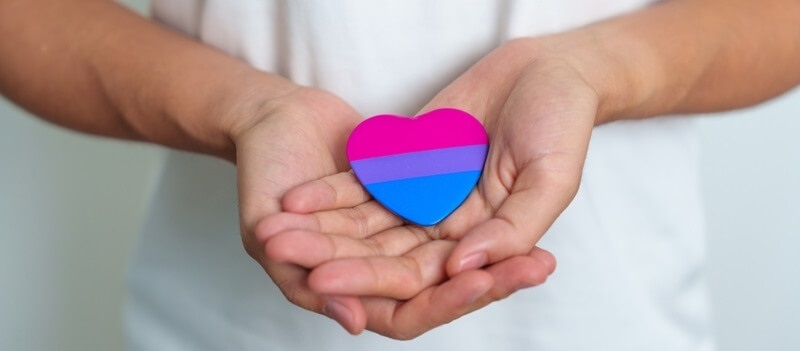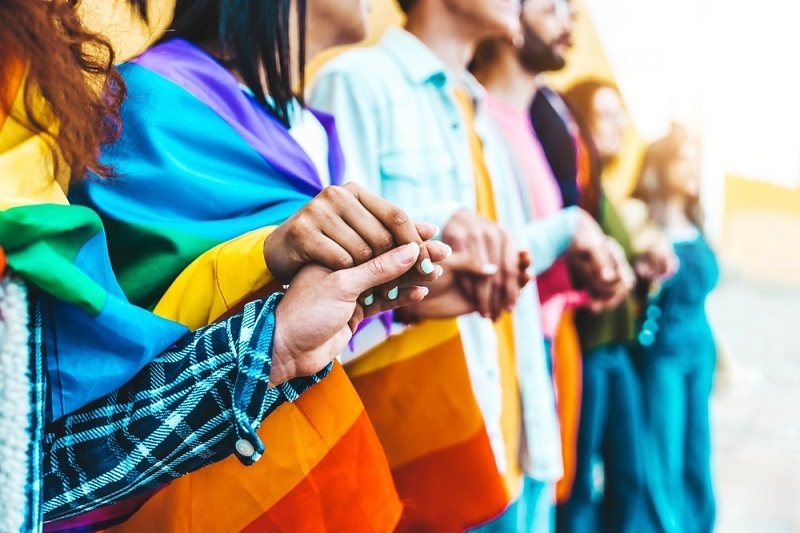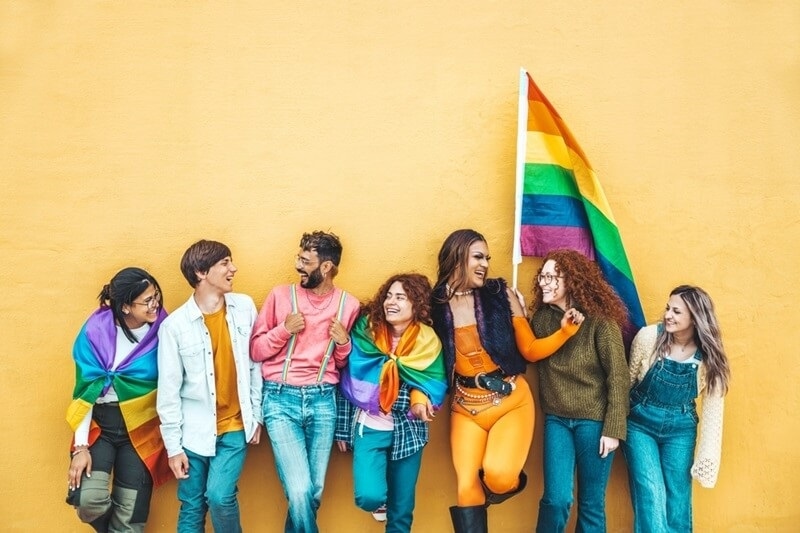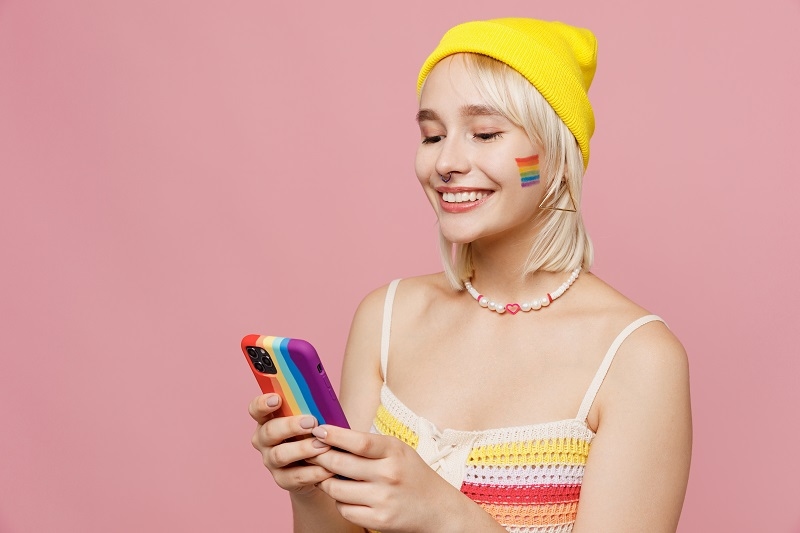What Is Gaydar? Breaking Down the Science & Accuracy

Gaydar means the supposed ability to tell if someone’s gay without them saying a word. It’s that immediate feeling—"they just give off a vibe." But let’s be real: vibes aren’t facts. So what is gaydar really? Some chalk it up to intuition. Others say it's nothing more than dressed-up stereotyping. Either way, the term’s been around since the '80s and it’s still stirring up the same questions in 2025.
So, is gaydar real? Can people actually sense someone’s orientation, or are we just reacting to coded behavior we’ve been conditioned to associate with queerness?
Is Gaydar Real or Just Pattern Recognition on Autopilot?
That “I Just Knew” Feeling
People love to say they’ve got good gaydar. Like it’s a skill. You hear it all the time—“I could just tell.” But what they’re really doing is reacting fast to surface-level stuff: how someone walks, talks, dresses, gestures.
Psychologists call this thin-slicing—making quick decisions based on minimal information. And yes, in studies, people can guess sexual orientation better than chance, landing somewhere between 55%–65% accuracy. But that’s still a lot of room for error.
Don’t Miss: Why Gay Depression is Often Overlooked: Addressing the Issue
The Science of Gaydar: Real Data or Just Reinforced Bias?
Researchers have tested the theory from every angle—showing participants short video clips, silent photos, or snippets of speech. Sometimes the guesses are right. Sometimes not. One thing’s clear: gaydar isn’t magic—it’s pattern recognition.
People are picking up on subtle cues: voice tone, fashion, body language, and social behavior. Put all those together, and the brain starts making assumptions. That's the core of the science of gaydar—a messy blend of instinct, stereotypes, and cultural conditioning.
One study had participants identify someone’s orientation after viewing a face for just 50 milliseconds. Another showed people guessing based on voice alone. Both had slightly better-than-random results, but nothing close to reliable.
How Accurate Is Gaydar Really?
Let’s call it what it is: unpredictable at best. Some LGBTQ+ folks read these cues more clearly—maybe because they’ve had to. Shared culture, survival, and community play a role. But for everyone else? The line between gaydar and guessing is thin.
So how accurate is gaydar? In a lab, you might hit 60% on a good day. In real life, where actual sexual diversity exists and not everyone plays into stereotypes, it gets shakier.
And then there’s tech. AI models trained on facial recognition have reached up to 80% accuracy—on paper. But most of that "accuracy" comes from picking up on styling choices, grooming, and lighting—not innate features. And that raises serious ethical red flags.
Gaydar Test: Insightful or Just Stereotyping for Fun?
A standard gaydar test shows you photos or short clips and asks: gay or straight?
Sounds harmless. Maybe even fun. But think twice. These tests usually lean on cultural stereotypes—high-pitched voice, flamboyant clothes, “feminine” posture for men, and the opposite for women. So what’s really being tested? Your pattern recognition—or your internalized bias?
It’s easy to confuse subconscious recognition with confirmation bias. Failing the test doesn’t mean your gaydar’s off—it might just mean the subject doesn’t fit outdated expectations.
The Psychology of Gaydar: Fast Judgments, Flawed Logic
Let’s talk mindset. The psychology of gaydar is less about truth and more about what you think you know. These judgments happen in seconds, long before any conscious thought kicks in. And the weird part? When people slow down and think about it, their accuracy actually drops.
That’s because these instincts aren’t based on logic—they’re built on exposure, environment, and past experiences.
Queer people—especially those who’ve spent time navigating straight spaces—often have a better sense of who's part of their community. Not because they’re special, but because they’ve had to tune into subtle signals for safety and connection.
Meanwhile, people with rigid views of gender or sexuality tend to score worse—even if they’re convinced they’re right. Confidence doesn’t equal accuracy. Especially here.
Gaydar Is Not a Superpower. It’s a Shortcut.
The biggest myth? That gaydar is some kind of sixth sense. It’s not. It’s a shortcut your brain takes—looking for signals and slotting them into categories. And like any shortcut, it’s prone to mistakes.
You’re not reading minds. You’re reacting to cues you've been trained—consciously or not—to associate with queerness.
If someone doesn’t act or present in a way that matches those expectations? You’ll likely miss. Worse, you might assume something that’s flat-out wrong.
So is gaydar real? Sort of. But it’s not reliable, and it’s definitely not fair.
The AI Problem: When Tech Starts Guessing Who’s Queer
In 2017, a Stanford study made headlines. Researchers claimed an algorithm could detect sexual orientation from facial photos with alarmingly high accuracy—81% for men, 71% for women.
The issue? It wasn’t magic. The AI was recognizing patterns like facial angle, makeup, grooming, photo filters. Presentation, not identity.
Still, it set off alarms. If machines can profile sexuality from public photos, what happens when this tech is used in places where being queer isn’t safe? It’s not just about privacy—it’s about protection.
Even if the science of gaydar becomes more sophisticated, the ethical mess it creates is undeniable.

Gaydar Can Be Harmful—Even If You Mean Well
Treating gaydar like a fun party trick? That’s a problem.
- False positives: You assume someone’s queer when they’re not.
- False negatives: You miss someone who is because they don’t “look the part.”
- Outing risks: Your guess could lead to speculation that outs someone without their consent.
- Cultural policing: You reinforce narrow expectations of what queerness looks like.
It’s one thing to think you’ve picked up on a vibe. It’s another to act on that assumption like it’s fact. Gaydar makes people too confident about things they have no right to assume.
When Gaydar Helps—And When It Doesn’t
There is a space where gaydar plays a role—inside the LGBTQ+ community. Sometimes, that vibe helps people feel seen, connected, safe. A nod. A look. A shared signal that says, “I see you.”
But even within the community, it’s not foolproof. People present in all kinds of ways. And making assumptions can be just as damaging inside the circle as it is outside.
If gaydar means anything useful, it should be this: a quiet alert that prompts curiosity, not certainty.
What Is Gaydar Really Picking Up On?
When people think their gaydar is firing, they’re usually reacting to four types of cues:
- Adornment – Clothes, accessories, grooming
- Actions – How someone walks, gestures, carries themselves
- Acoustics – Tone, pitch, inflection
- Appearance – Facial expression, posture, eye contact
None of these are exclusive to any sexual orientation. But when enough line up with what we think gay looks like, our brain lights up.
That’s why what is gaydar is less about intuition and more about how closely someone matches a cultural script.
Discover More: Gay Monogamy: Top Trends, Challenges, and Benefits
“I’m Good at Gaydar” Usually Means “I Lean on Stereotypes”
Sorry, but most people who brag about their gaydar aren’t picking up on anything deeper than clichés. And they don’t realize it. That confidence? Misplaced.
True intuition isn’t loud. It’s quiet. Humble. It questions itself. It knows when it doesn’t know.
So next time you get that feeling—pause. Ask yourself: Am I sensing something real? Or am I just reacting to years of media, fashion, and pop culture conditioning?
Final Thoughts
Here’s the truth: if someone hasn’t shared their orientation, you don’t know it. Gaydar might make you feel sure—but it’s not your call to make.
It’s okay to notice patterns. It’s okay to wonder. But acting like you know someone’s identity based on a look, a voice, a vibe? That’s not intuition. That’s projection.
So yes, gaydar is real—but it’s messy, flawed, and full of blind spots. And in 2025, we should be well past guessing games when it comes to identity.
Let people show you who they are. That’s the only real accuracy that matters.























